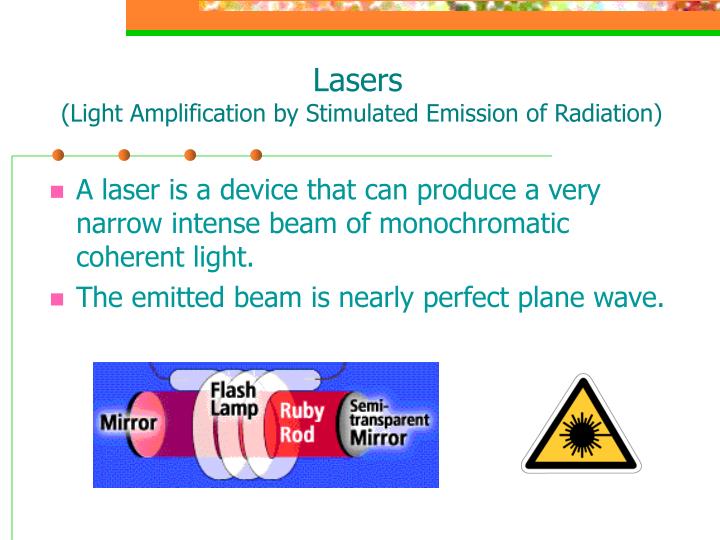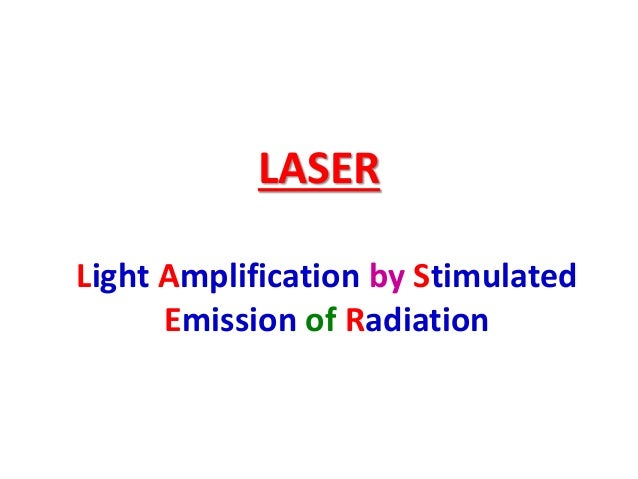The word laser stands for light amplification by stimulated emission of radiation

The word laser stands for “Light Amplification by Stimulated Emission of Radiation”

The term “laser” is an acronym that stands for “Light Amplification by Stimulated Emission of Radiation”. Coined by Gordon Gould in 1957, this concept revolutionized the world of technology and opened up incredible possibilities in various fields. A laser is a device that emits a focused beam of coherent light through the process of stimulated emission.
Lasers are widely used in many areas, including medicine, telecommunications, industry, entertainment, and scientific research. The unique properties of laser light, such as its high intensity, monochromaticity, and coherence, make it an invaluable tool in a diverse range of applications.

The principle behind the operation of a laser involves the stimulation of atoms or molecules to emit light energy. As atoms or molecules are excited by an energy source, such as electricity or another light source, they enter an excited state. When these excited particles interact with other atoms or molecules, they can trigger the emission of additional photons, which are identical in terms of wavelength, direction, and phase. This process creates a cascading effect, leading to the amplification and coherence of the emitted light, resulting in a powerful and concentrated beam of laser light.
One of the key features of lasers is their ability to produce a narrow, concentrated beam of light. This property makes lasers ideal for applications such as laser cutting, welding, and drilling in various industries. The precision and accuracy of laser beams allow for intricate detailing and can significantly enhance efficiency and productivity.
In the medical field, lasers have proven to be indispensable tools. They are commonly used in laser surgeries, such as corrective eye surgeries (LASIK), removal of skin lesions, and even dental procedures. The focused and controlled nature of laser light minimizes damage to surrounding tissues and ensures better patient outcomes.
Laser technology has also revolutionized telecommunications. Optical fibers, which use laser-generated light signals, enable high-speed data transmission over long distances without significant loss or degradation. This technology forms the backbone of modern communication systems, including the internet, enabling fast and reliable connections globally.
In scientific research, lasers have opened up new possibilities for experiments and discoveries. They are used in spectroscopy to analyze the composition of materials, in atomic and molecular physics to investigate fundamental particles, and in particle accelerators to study subatomic particles.
Despite their numerous applications, lasers also come with certain risks. The high intensity and focused nature of laser beams can cause damage to the eyes and skin if proper precautions are not taken. Therefore, laser safety guidelines are crucial in any setting where lasers are used.
To summarize, the acronym “laser” stands for “Light Amplification by Stimulated Emission of Radiation.” Lasers have become an integral part of modern technology, finding applications in various fields. Their unique properties make them invaluable tools in medicine, telecommunications, industry, entertainment, and scientific research. However, it is essential to prioritize safety when working with lasers to avoid any potential harm.
Related Posts
Quick Links
Legal Stuff

